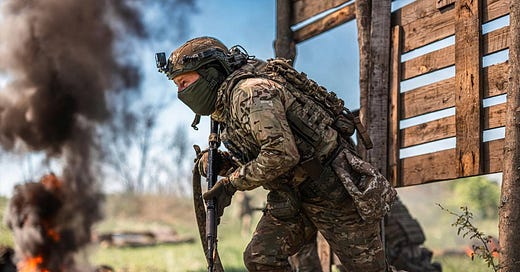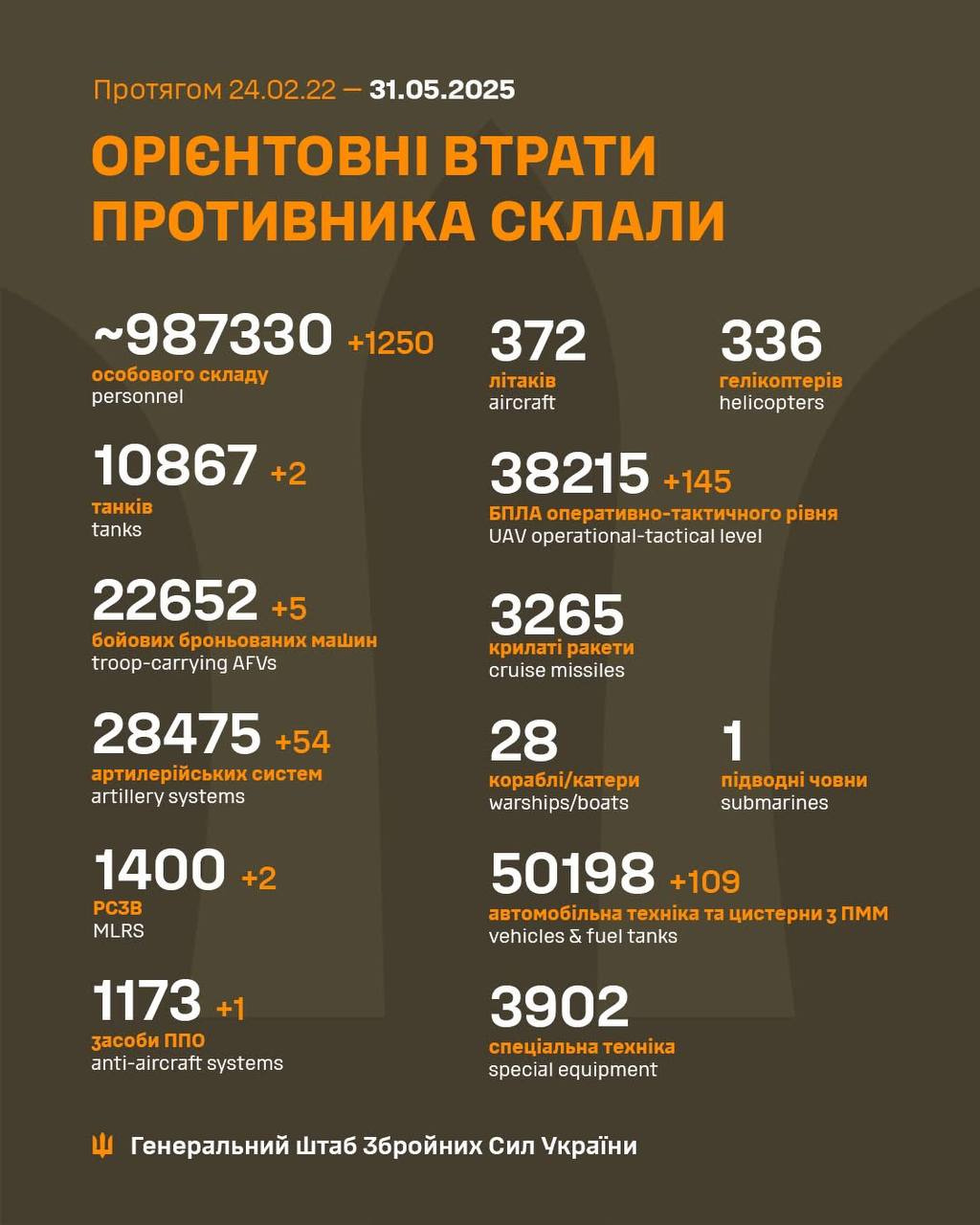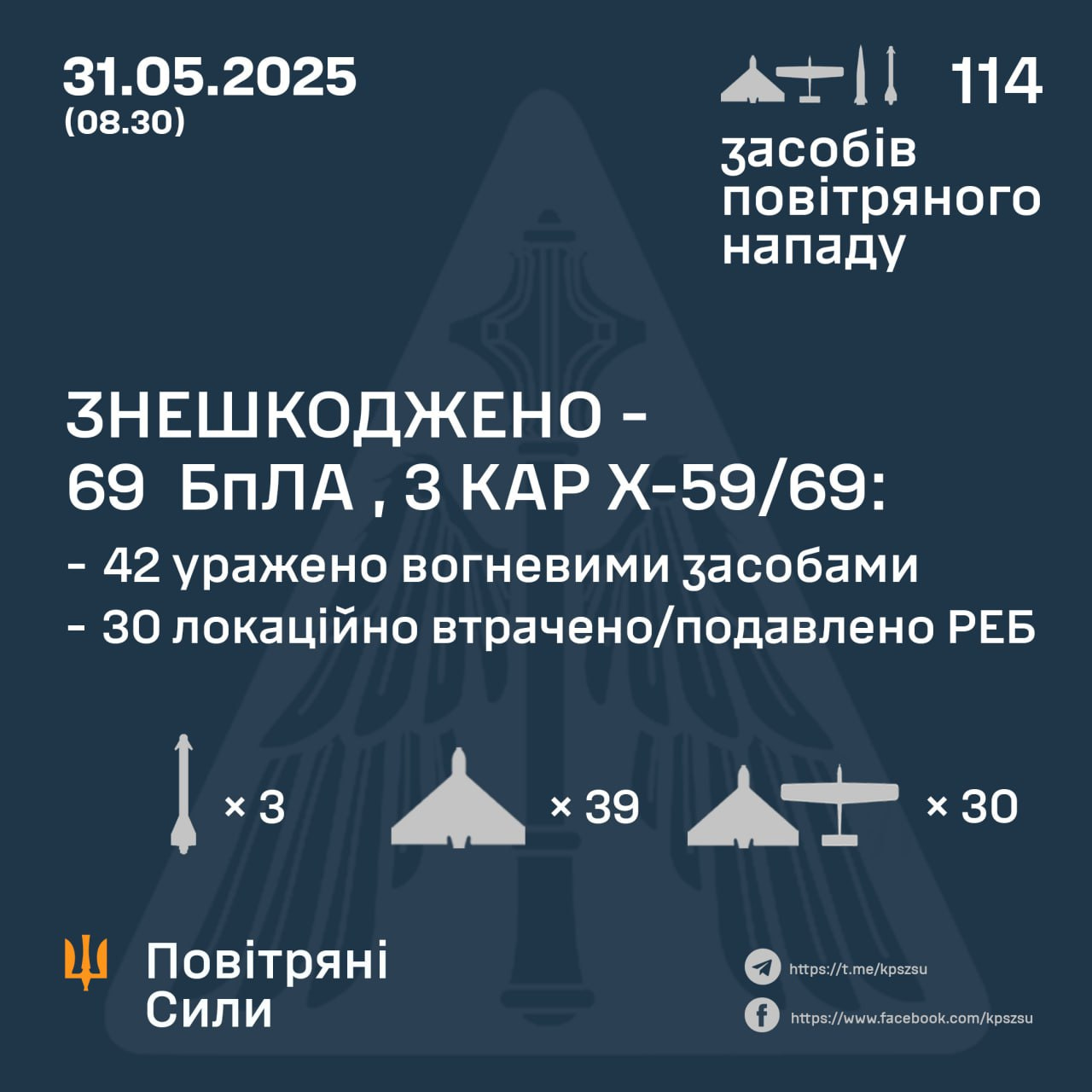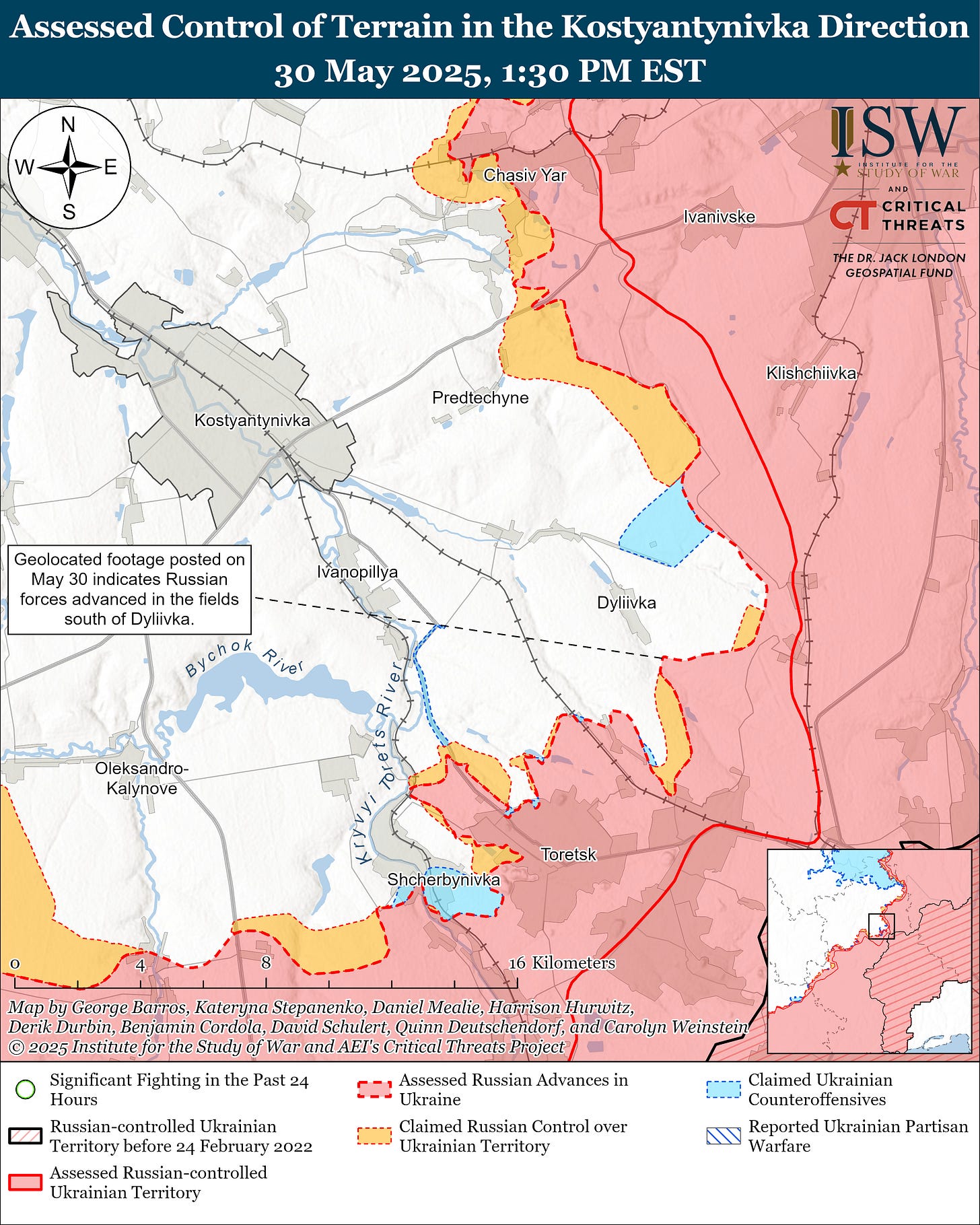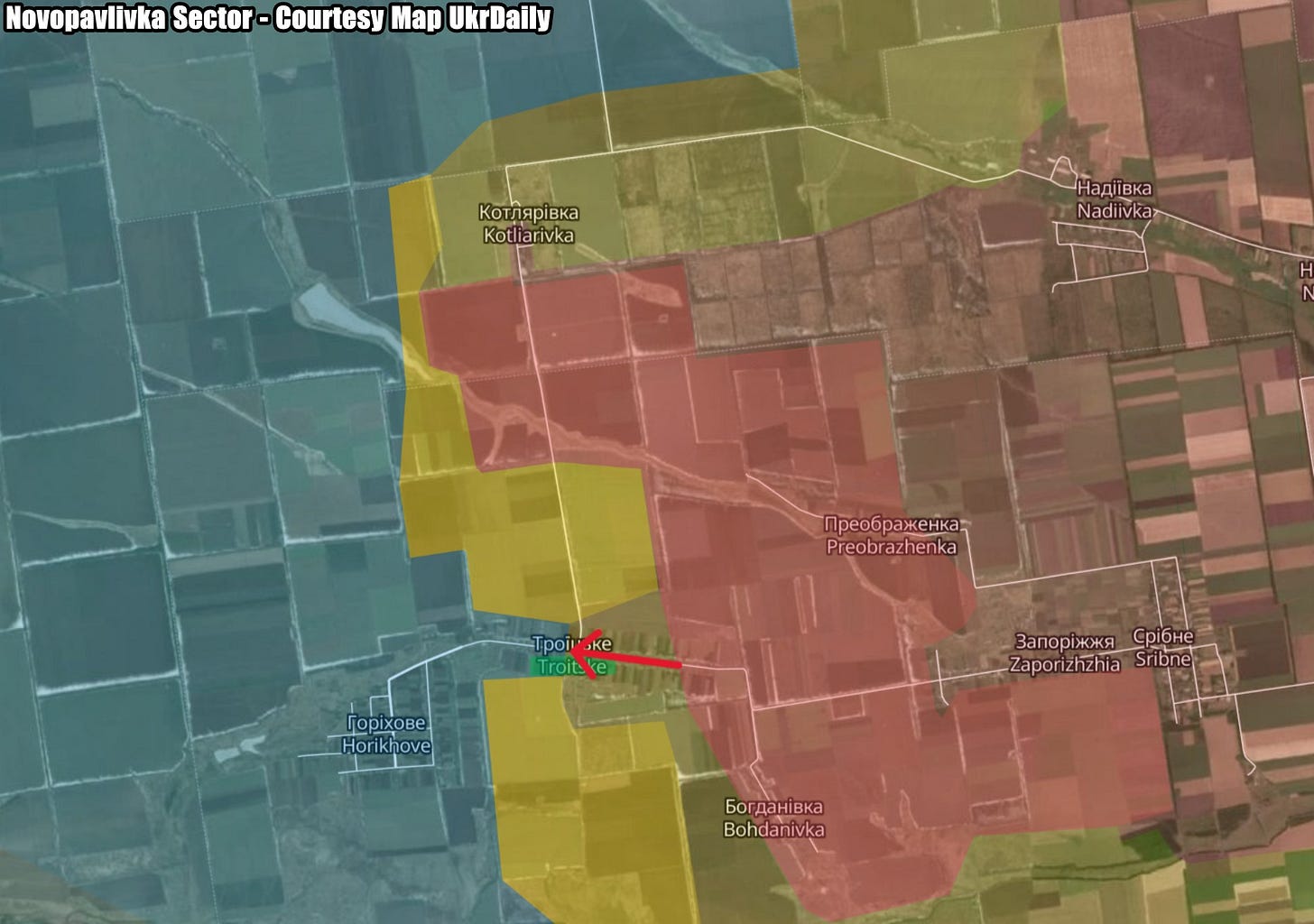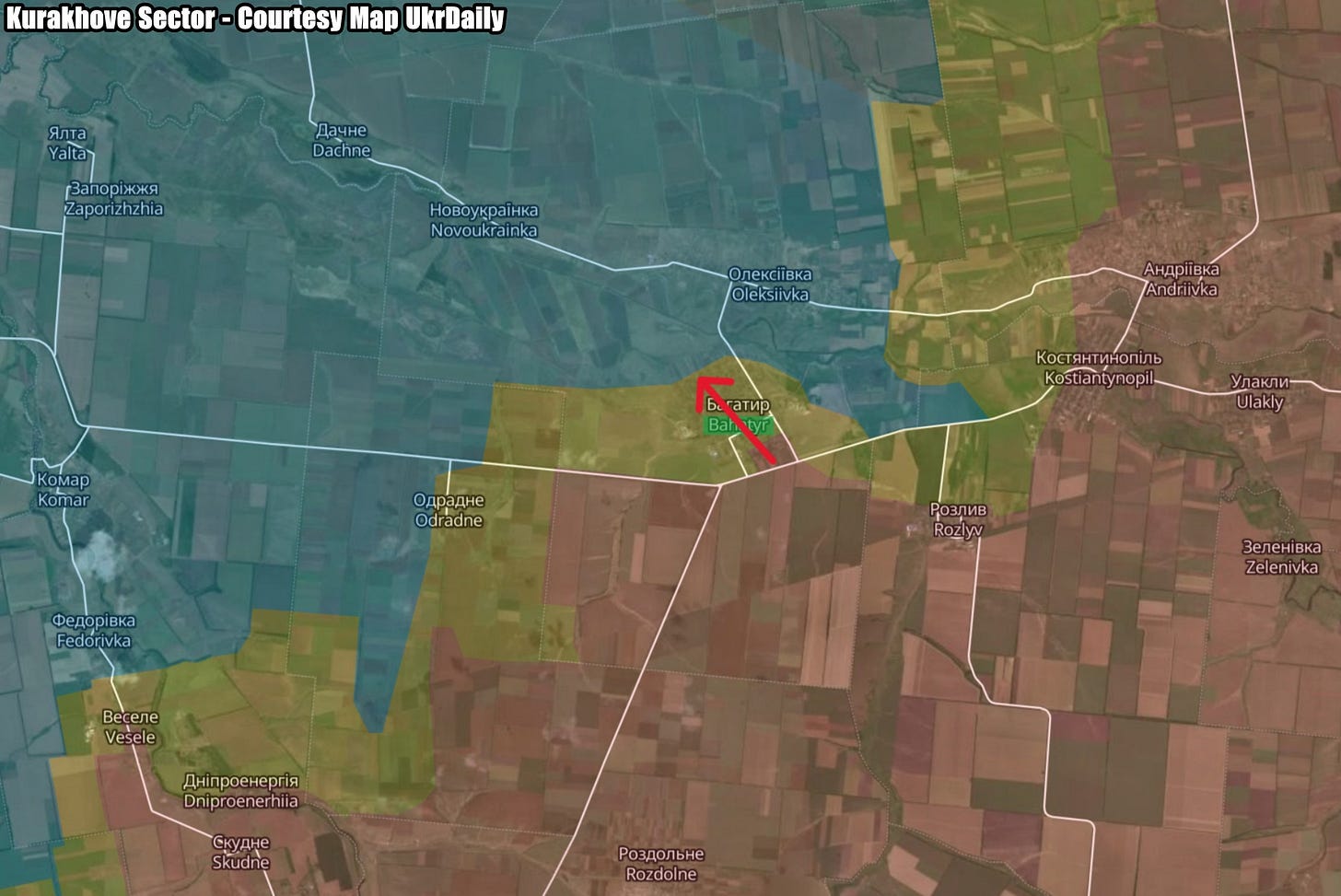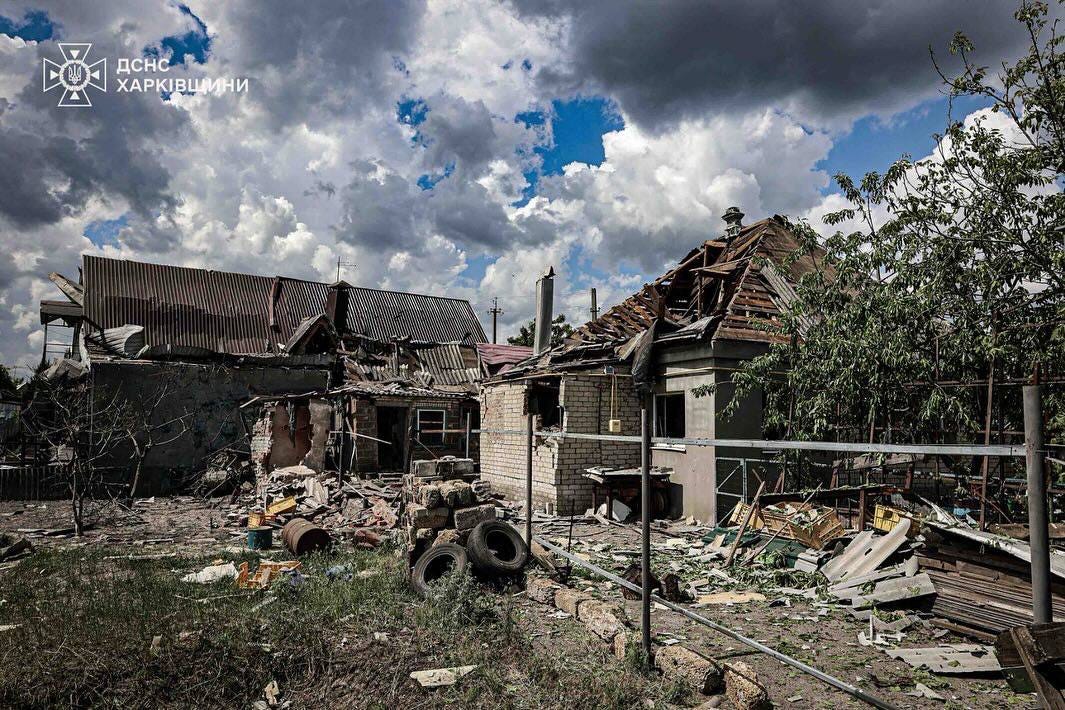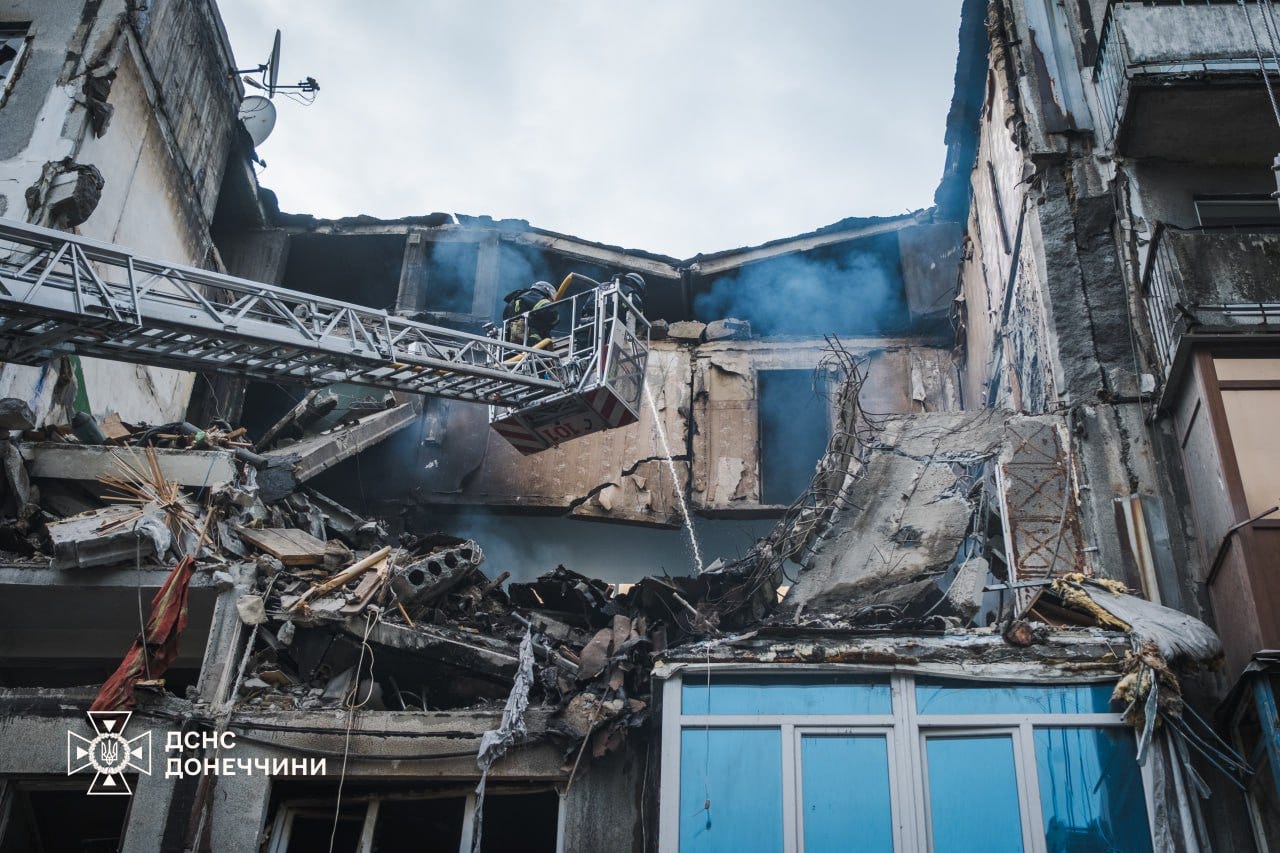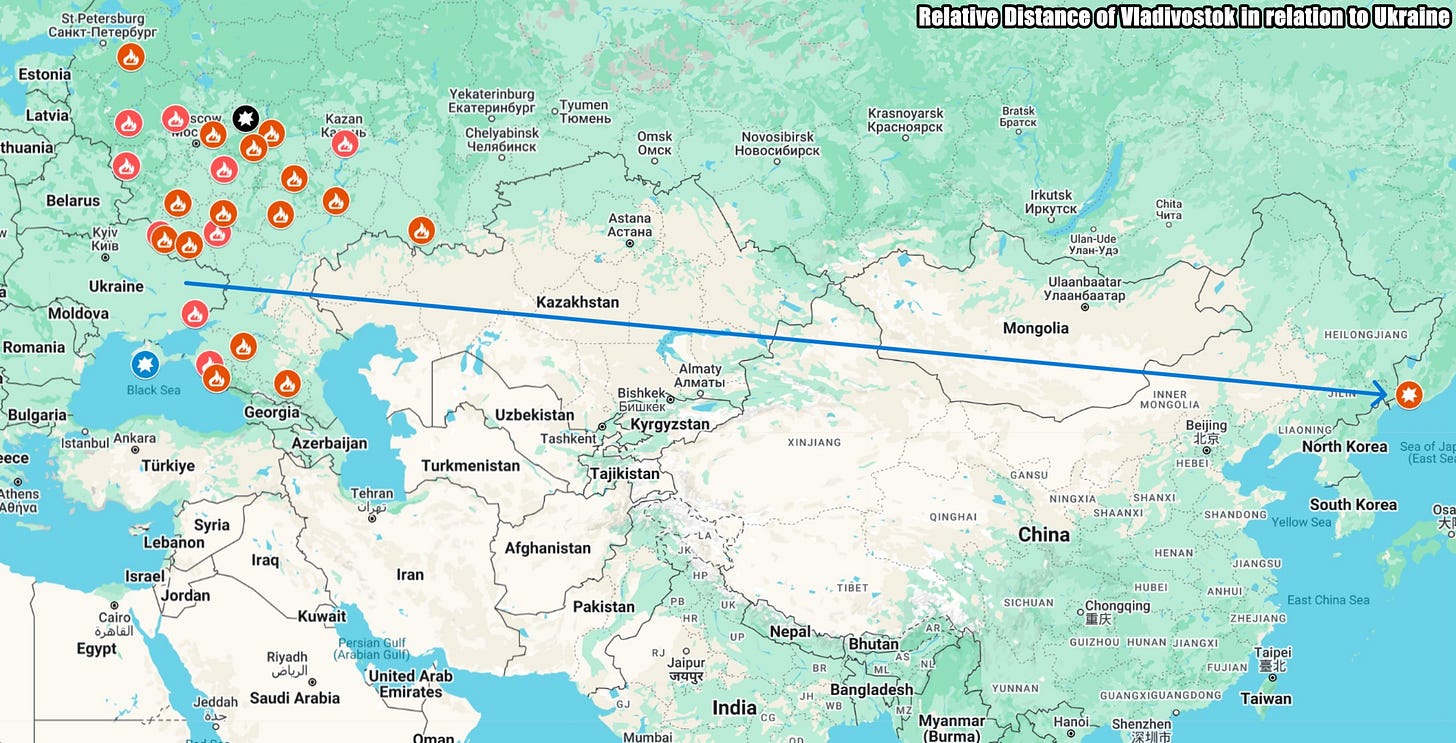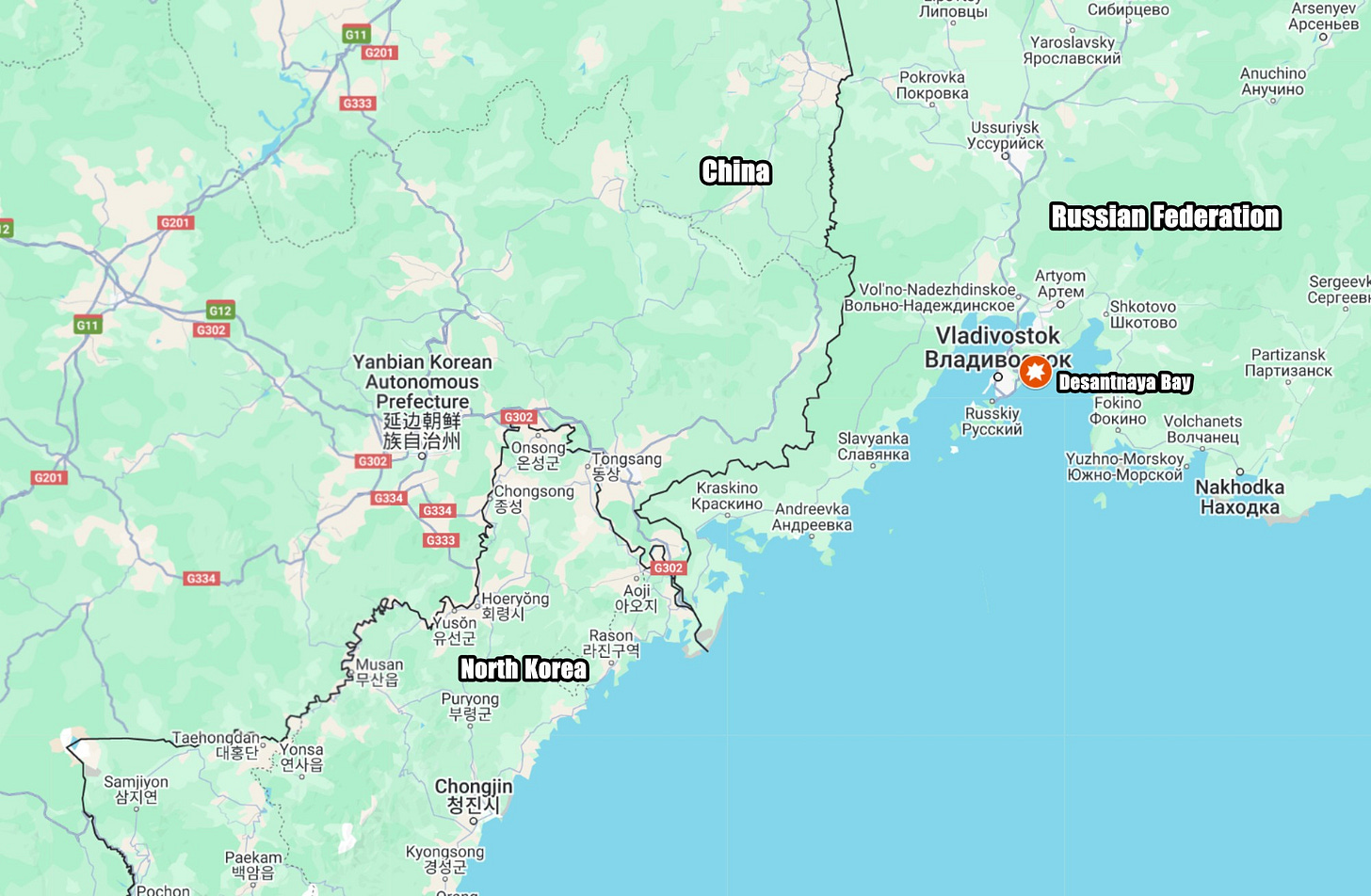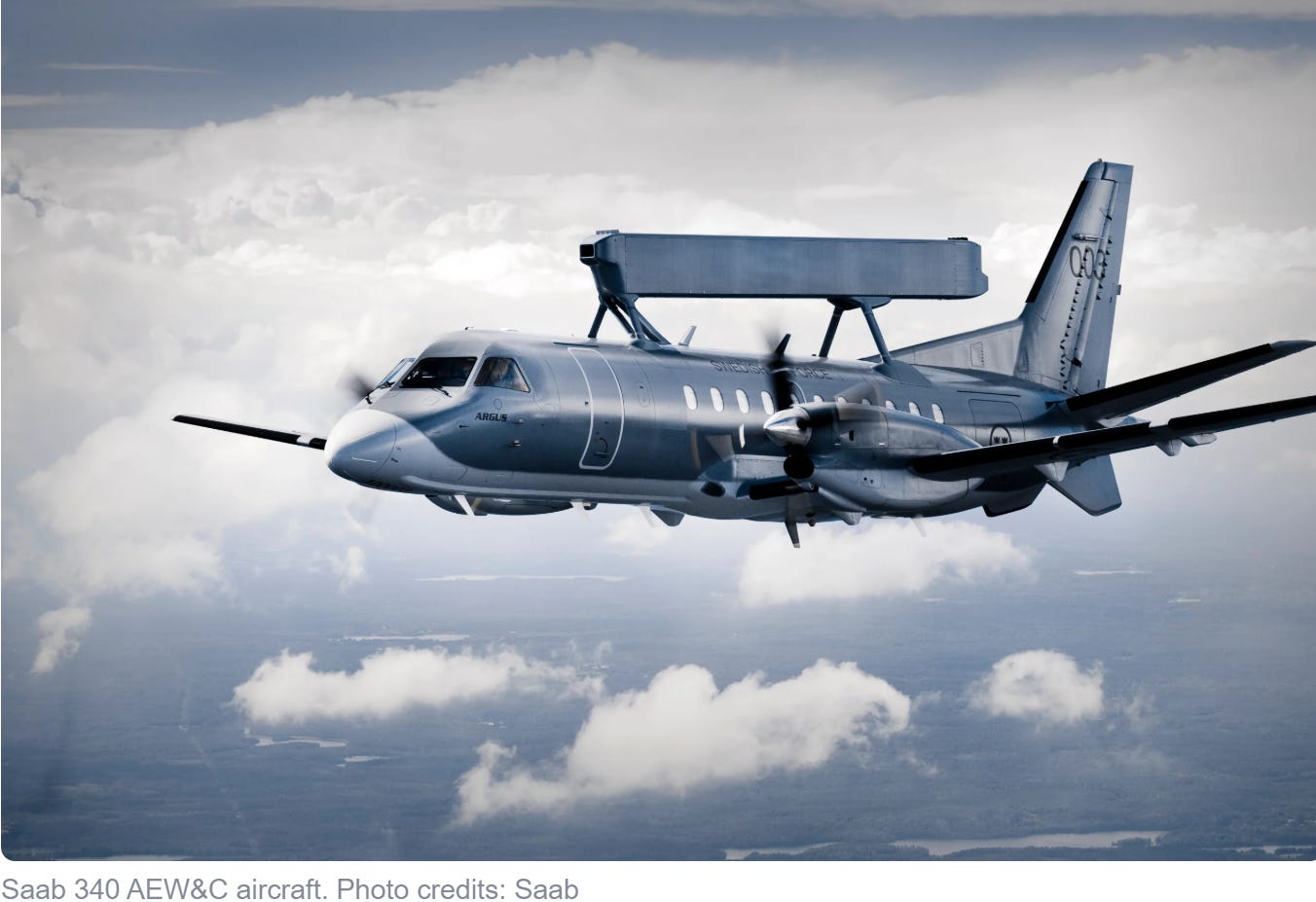Slava Ukraini! In early 2022 I began a Telegram channel aggregating news from a number of sources daily on the war in Ukraine. In June 2023 I began providing a daily draft for the Ukraine War Brief Podcast collecting news from over 70 sources daily, which formed the basis of the script. While the Podcast no longer exists I have continued to make this Brief available for my followers here on Substack for those who wish to keep up with the news from the war.
If you find the Brief informative I would appreciate it if you shared it with others.
All the latest news on the Russo-Ukraine War 6 days per week
ALONG THE CONTACT LINE
GSAFU Morning Report
For:May 31, 2025
The General Staff of the Armed Forces of Ukraine in its Operational Information update at 08:00 on May 31 stated that day 1193 of the full-scale invasion of the Russian Federation against Ukraine had begun.
The situation on the line of combat remains tense in some sectors. Ukrainian defenders continue to actively counteract the Russian aggressor, causing them significant losses in personnel, equipment and technology. Exhausting the enemy along the entire front line and continuing to disrupt the plans of Russian occupiers to advance deeper into the territory of Ukraine.
During the past day, 191 combat engagements took place.
Over the past 24 hours, the enemy carried out 4 missile strikes, 85 air strikes, used 3,767 attack drones and fired approximately 6,000 artillery shells across the positions of Ukrainian forces and civilians.
Air Force Daily Report
69 ENEMY UAVS DESTROYED AND 3 MISSILES WERE DESTROYED
➖➖➖➖➖➖➖➖➖
On the night of May 31 (from 7:30 p.m. on May 30), the enemy attacked with 114 air attack vehicles:
- 107 Shahed type strike UAVs and simulator drones of various types from the following directions: Millerovo, Shatalovo, Kursk, Primorsko-Akhtarsk – Russian Federation, Chauda – TOT of Crimea;
- 2 jet attack UAVs (unidentified type) from Belgorod region – Russian Federation;
- 2 S-300 anti-aircraft guided missiles from Kursk region – Russia;
- 3 Kh-59/69 guided aircraft missiles from the airspace of the Belgorod region - Russia.
The main areas of the air strike are Kharkiv, Sumy and Donetsk regions.
The air attack was repelled by aviation, anti-aircraft missile troops, electronic warfare and unmanned systems units, and mobile fire groups of the Defense Forces of Ukraine.
As of 08:30, air defenses neutralized 69 enemy Shahed UAVs (other types of drones) and 3 Kh-59/69 guided aircraft missiles in the east, south, north, and center of the country. 42 were shot down by fire weapons, 30 were lost/suppressed by electronic warfare.
Enemy airstrikes were recorded in 13 locations.
Combat Operations in the Russian Federation
There have been no major changes to the combat environment since our last report.
The Khortytsia operational-strategic group
(Responsible for the northeastern part of Ukraine. )
Toretsk Sector: Russian forces recently advanced in the Toretsk direction.
Geolocated footage published on May 29 indicates that Russian forces recently advanced southeast of northern Dyliivka up to the O-0519 road from the Siversky Donets Donbas canal and up to the Dyliivka railway station in southern Dyliivka (both north of Toretsk).
The Tavria operational-strategic group
(Responsible for the central-eastern and southeastern part of Ukraine.)
Novopavlivka Sector: Russian forces recently advanced in the Novopavlivka direction.
Geolocated footage published on May 30 shows Russian forces raising a flag in the western outskirts of Troitske (southeast of Novopavlivka), indicating that Russian forces likely seized the settlement.
Kurakhove Sector: Russian forces recently advanced in the Kurakhove direction.
Geolocated footage published on May 30 indicates that Russian forces recently advanced northwest of Bahatyr (west of Kurakhove).
The Odesa operational-strategic group
(Responsible for Kherson, Qırım, (also known as Crimea) and the Black Sea.)
There have been no major changes to the combat environment since our last report.
TEMPORARILY OCCUPIED TERRITORIES
Nothing major to report.
THE HOME FRONT
Russian attacks against Ukraine kill 10, injure 32 over past day.
At least 10 people were killed and 32 others injured over the past 24 hours as Russian forces launched widespread aerial and artillery attacks across multiple Ukrainian regions, the Kyiv Independent reported citing regional officials on May 31.
In Kharkiv Oblast, Governor Oleh Syniehubov said a series of strikes hit Kharkiv and nine surrounding settlements. Six people were injured. The oblast endured attacks with various weapons including 26 Shahed drones, 11 unguided rockets, and guided aerial bombs. Dozens of civilian infrastructure sites were reportedly damaged or destroyed.
In Kherson Oblast, Governor Oleksandr Prokudin reported three people were killed and 10 others injured as Russia targeted more than 30 towns and villages with drones, artillery, and airstrikes. Critical and residential infrastructure was hit, including a private house, gas pipeline, garages, and vehicles.
In Zaporizhzhia Oblast, Governor Ivan Fedorov said one child was killed and another injured in Dolynka village. Russian forces launched 628 strikes across 24 settlements, including 40 airstrikes, 376 drone attacks (mostly FPV), and 205 artillery strikes.
In Dnipropetrovsk Oblast, Governor Serhii Lysak said two people were injured in attacks on the Nikopol area, including the city itself and the surrounding communities. Artillery, FPV drones, and drone-dropped munitions were used.
In Sumy Oblast, regional officials reported that one person injured in earlier attacks died in a hospital, bringing the civilian toll to at least one dead and four wounded in the past day. More than 160 strikes hit 39 settlements in 16 communities. Weapons used included air-dropped bombs, MLRS, and explosive devices from drones.
In Donetsk Oblast, Governor Vadym Filashkin reported five civilians were killed. Nine more people were injured. The death toll does not include casualties from occupied Mariupol and Volnovakha.
Mandatory evacuation from 11 additional villages in Sumy Oblast.
Authorities have ordered the mandatory evacuation of residents from 11 additional villages in Sumy Oblast due to escalating Russian attacks, the Kyiv Independent reported citing Governor Oleh Hryhorov on May 31.
Hryhorov signed the order citing the "constant threat to civilian life" caused by ongoing shelling in the region. The evacuation covers settlements in local communities of Sumy Oblast, which lies near the Russian border.
"(Russia) continues its terror of the borderlands, and our shared task is to save every life," Hryhorov said in a statement. "I urge residents not to delay the decision to evacuate. Staying in a zone of constant danger is a direct threat to your life and health."
With the latest order, a total of 213 settlements in Sumy Oblast are now under mandatory evacuation.
The move comes as Ukrainian officials and military analysts warn of a possible new Russian offensive targeting the region. On May 29, State Border Guard Service spokesperson Andrii Demchenko said Russia had amassed "sufficient forces" in neighboring Kursk Oblast to potentially launch an incursion into Sumy.
Speaking on national television, Demchenko noted that Russian troops have remained stationed in Kursk Oblast after being pushed out by Ukrainian forces during a counteroffensive in August 2024. Since then, Kyiv has observed fluctuating numbers of soldiers and equipment along the border.
"They have enough forces there (in Kursk Oblast) to carry out operations against our border and attempt to attack the territory of Ukraine," Demchenko said.
Russian forces recently captured four border villages, Novenke, Zhuravka, Veselivka, and Basivka, prompting further concern. President Volodymyr Zelensky said earlier that Moscow is concentrating 50,000 troops near Sumy Oblast in a bid to create a 10-kilometer buffer zone.
RUSSIAN WORLD
The Kremlin fabricated story on Putin’s near-miss with Ukrainian drones.
Claims of Russian President Vladimir Putin's helicopter being "at the epicenter" of a Ukrainian drone attack in Kursk Oblast were reportedly fabricated by the Kremlin, the Moscow Times reported on May 30, citing four Russian government sources.
A Russian military commander claimed on May 20 that Putin's helicopter was subject to a Ukrainian drone attack in Russia's Kursk Oblast, as Putin made his first known visit to the region since Moscow claimed its recapture.
"We were simultaneously engaged in an air defense battle and ensuring airspace security for the president’s helicopter flight," Yury Dashkin, commander of an air defense division, said, as cited by the Russian news agency RBC on May 25. "The helicopter was effectively at the epicenter of the response to the massive drone attack."
Multiple sources in the Kremlin told the Moscow Times that Russia's Defense Ministry had disseminated the story to Russian-state media as a means to make Putin appear as though he "shares the danger" of the war, in an attempt to garner support for the Russian president by painting him as more closely involved in the fighting.
Despite the claims, Putin's visit to Kursk Oblast was conducted in secrecy, with Russian-state media reporting on the trip after it had concluded, according to the Moscow Times.
"President Putin himself is suffering, struggling, and even risking his own life. Your problems are trivial. You must grit your teeth and endure," a government official told the Moscow Times, in describing the Kremlin's motivation behind the staging.
The reportedly fabricated story comes as Kyiv has ramped up its attack on Moscow, launching hundreds of Ukrainian kamikaze drones towards the Russian capital. While none have appeared to have reached Moscow, the attacks have caused significant disruptions to commuter air traffic.
Ukrainian drones have forced at least 218 temporary airport closures across Russia since Jan. 1, independent Russian outlet Novaya Gazeta Europe reported on May 14, citing data from Russia's state aviation agency Rosaviatsia.
During his visit to Kursk, Putin met with Acting Governor Alexander Khinshtein, heads of local municipalities, and members of volunteer organizations. He also visited the Kursk Nuclear Power Plant, the Kremlin's press service said. The exact date of the visit was not revealed at the time of publication.
Ukraine launched a cross-border incursion into Kursk Oblast in August 2024, marking the first large-scale invasion of Russian territory by foreign forces since World War II. The operation aimed to disrupt a planned Russian offensive on the neighboring Sumy Oblast and draw Russian forces away from the embattled Donetsk Oblast.
Russia Suffers From Severe Potato Shortage.
The presence of a severe shortage of potatoes in Russia has finally been acknowledged by President Vladimir Putin and even the “potato Fuhrer” himself, Belarusian President Alexander Lukashenko. Prices have nearly tripled year-on-year, the Moscow Times reports.
However, the current price-of-potato crisis is only the most noticeable continuation of the general food crisis facing Russians, which began in 2014 when Moscow banned imports of European dairy, meat and other agricultural products in retaliation for Western sanctions over the annexation of Crimea.
Kremlin propagandists shouted that they would happily go without Italian parmesan and Margarita Simonyan even promised to wear torn tights if it would help the greatness of Russia. What she would achieve by this, and what it would say about Russia’s greatness, is a separate question.
To return to the potato, it is important to remember that its introduction to Russia was one of the important Western reforms of Peter the Great, along with the Table of Ranks and beard tax. The Russian people were initially very suspicious of potatoes, thinking the authorities wanted to poison them. But the humble crop has trickled down to become an everyday food.
There is a story that in the late 1980s, when McDonald's came to Russia, American fast food technologists faced the problem that there were no potatoes fit for human consumption in the country. Russian-Soviet potatoes were fodder for livestock and turned out to be unsuitable for slicing and frying. First, human-grade potatoes were bought in Poland. Then we managed to grow our own.
The connection between culture and health is also obvious. If people do not wash their hands before eating, epidemics will spread. When food, even something as simple as a potato, becomes more expensive, an invisible catastrophe occurs. People do not start eating less, but they start eating monotonously, rotating between pasta or potatoes. Perhaps individual cases are tolerable. But when it affects swathes of the population, problems will start to emerge.
When potatoes become more expensive, people do not stop buying them. After all, they need something to replace pasta. But they will stop buying fish and greens to eat with them, leading to malnutrition that will cause irreparable harm to Russian health care for decades.
Ukraine attacks elite Russian unit base nearly 7,000km away in Vladivostok.
Ukraine's military intelligence agency (HUR) was behind explosions near Desantnaya Bay in Russia's Vladivostok on May 30, which reportedly damaged military personnel and equipment, a source in HUR reported to the Kyiv Independent.
If confirmed, the Vladivostok operation would be Ukraine's furthest incursion into Russian territory - approximately 6,800 kilometres from the Ukrainian border.
According to the source, two blasts occurred early in the morning at a site where Russia's 47th Separate Air Assault Battalion of the 155th Separate Guards Marine Brigade was stationed.
The 155th Marine Brigade has been actively involved in the full-scale invasion of Ukraine, including battles in Mariupol and Vuhledar in Donetsk Oblast, as well as operations in Russia's Kursk Oblast.
Local media reported two loud bangs, followed by temporary road closures and emergency vehicles seen in the area, but did not mention anything about a military base.
Russia's Anti-Terrorist Commission of Primorsky Krai attributed the explosions to the ignition of propane-butane cylinders inside a vehicle. No official casualties have been reported.
One of the explosions allegedly happened near a checkpoint, while the other hit the location of personnel and the unit's command.
"Manpower, military equipment, and special equipment were hit," the source claimed.
RELATED INTERNATIONAL NEWS
European leaders shift focus to defending Ukraine without US support.
British and French officials drawing up plans for a peacekeeping force in Ukraine have discussed the need to “get real” about Donald Trump abandoning the country, the Telegraph reported on May 31.
Officials agreed to shift the focus from deploying European troops to back up any ceasefire to sustaining Kyiv’s long-term defence against Russia’s invasion without American support.
There is now a genuine concern that the US president will follow through on his threat to walk away from his role as a mediator, having failed to bring Vladimir Putin to the negotiating table.
“Let’s get real and admit the US will never be on board,” a Western official told the Telegraph, describing the dire mood at the meeting in the Hague.
A European diplomat added: “It was mostly about how to sustain the necessary support to Ukraine when we assume that the US would only continue providing some specific assets, such as intelligence.
“We also agreed on the need to step up economic pressure on Russia.”
The meeting in the Dutch capital, attended by “political directors” from foreign ministries, marked a stark change in roles of the “coalition of the willing” devised by Sir Keir Starmer and Emmanuel Macron to uphold a possible ceasefire being pursued by the Americans.
Sir Keir and Mr Macron have been pushing the “coalition of the willing” proposal under which European allies would use their soldiers to help enforce any peace deal.
More than 30 nations have indicated support, although only a handful have publicly offered to put troops on the ground in Ukraine.
A central question had been whether Washington is willing to provide what has been described by UK figures as a “security guarantee” or a “back-up” for this force.
The group still hasn’t publicly conceded that its intentions have changed, with the chances of peace dwindling the longer Putin holds out against international pressure for a truce.
The European nations also agreed to invite Volodymyr Zelenskyy, Ukraine’s president, to the Nato summit in The Hague next month.
His attendance had previously been in doubt after Mr Trump’s vocal opposition to Ukraine joining the Western military alliance.
General Keith Kellogg, Mr Trump’s Ukraine envoy, said on Friday: “We’ve said that, to us, Ukraine coming into Nato is not on the table.
“And we’re not the only country that says that. You know, I can probably give you four countries in Nato, and it takes 32 of the 32 to allow you to come into Nato.”
On Monday, Britain’s national security adviser is expected to attend the next round of peace talks between Russia and Ukraine in Istanbul.
Gen Kellogg told ABC News: “We’ll have what we call the E3. That is the national security advisers from Germany, France, and Great Britain…When we were in London, they kind of helped us mould a term sheet for Ukraine.”
Moscow and Kyiv held their first direct negotiations in more than three years in the Turkish capital earlier this month.
On Friday, the Kremlin said it would only discuss the conditions of a ceasefire at the talks in Istanbul after Kyiv demanded to see a peace memorandum prior to negotiations.
Ukraine said it wanted to see a document setting out Russia’s peace proposal before committing to sending officials to Istanbul.
Andrii Sybiha, Ukraine’s foreign minister, said: “In order for the next planned meeting to be substantive and meaningful, it is important to receive a document in advance so that the delegation that will attend has the authority to discuss the relevant positions.”
Sergei Lavrov, Russia’s foreign minister, announced the second round of talks earlier this week after Donald Trump further criticised Vladimir Putin.
The US president had called his Russian counterpart “crazy” and accused him of “playing with fire” before appearing to give him a two-week deadline to secure a deal.
Next week, Britain and Germany will also host a meeting of the Ukraine Defence Contact Group of 50 nations coordinating military aid to Ukraine.
MILITARY & TECH
Ukraine integrates NATO command and control system into combat aviation.
Ukraine’s combat aviation will receive command and control systems for better interaction between individual aircraft and air defense systems, Militarnyi reports.
The signing of a license agreement for the use of non-commercial CRC (CSI) software was announced by Kateryna Chornohorenko, Deputy Minister of Defence of Ukraine for Digital Development. The aircraft will be equipped with the CRC System Interface, which will enable coordination and control between Ukrainian combat aircraft as well as between Ukrainian and NATO aircraft.
CRC is NATO’s most comprehensive data channel buffer, supporting real-time information exchange between different command and control elements.
In addition to information exchange between aircraft, data transmission is also possible between naval vessels, NATO long-range radar detection aircraft (NAEW), headquarters, and aviation directly.
Standardized NATO data transmission channels are used to implement a large-scale environment, including ATDL1, Link 1, Link 11A, Link 11B, and Link 16.
Another important element of the system is the ability to target and transmit data about targets to aircraft, both within the aviation unit and to combat aircraft from other units, which significantly increases operational efficiency, particularly when intercepting cruise missiles.
“Control using the Link 16 data transfer protocol — NATO’s ‘military Wi-Fi’ — provides control of aircraft (F-16, Mirage 2000) and integrated air and missile defense systems (Patriot), provided as part of international military assistance,” Chernohorenko clarified.
Additional CSI functionalities include:
Data transmission and relay via numerous national and NATO communication channels.
Real-time formation of a common operational picture (COP) covering air, surface, and ground targets, supplemented with intelligence information obtained from communication channels.
Air defense force management (GBAD) via various data transmission channels, including Link 16.
Ability to control interceptors via Link 16.
Connection to surface assets via Link 11A.
It should be noted that the integration of this system on F-16 fighters will significantly enhance their combat capabilities. At the same time, the fighter platform’s potential will allow the aircraft to be upgraded to a higher standard in the future.
This creates opportunities for the installation of a modern radar station, new communication systems, warning systems, and other equipment.
In addition, even before the transfer of the fighters, in 2023, it was assumed that the F-16 fighters, which at that time could have only been transferred to Ukraine, may undergo modernization, but no details had been provided at the time.
That’s it for today’s Brief folks if you would like to keep up with events in Ukraine daily please consider subscribing, it’s free!


